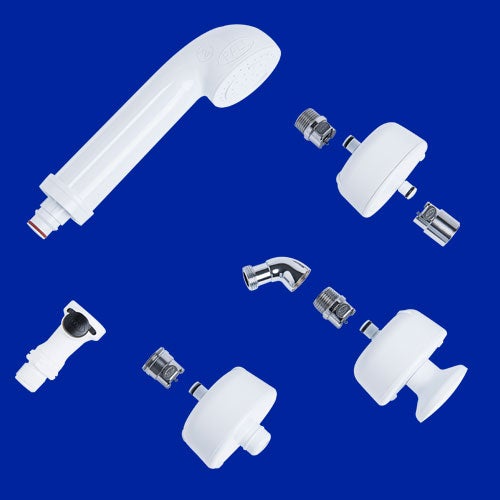
Buildings vacated at the peak of Covid-19 are subject to greater risks of water stagnation due to a lack of flow and activity. Even if buildings have been reopened for some time, there may be unresolved risks within water systems.
Returning occupants are at risk of exposure to harmful bacteria. From hospitals and hotels to offices and gyms, water stagnation must be mitigated wherever water may be directly consumed or used for washing. This is particularly important in buildings where occupants are staying for long periods and may have weakened immune systems.
Water stagnation can lead to an increased risk of Legionella and other waterborne pathogens harmful to human health, as well as the accumulation of biofilms and mould. Corroding pipework that has resulted from stagnation can further contaminate water systems with the presence of metals such as lead and copper.
According to the Centers for Disease Control and Prevention (CDC), the water stagnation period leading to an outbreak of Legionella can range from weeks or months depending on plumbing-specific factors, disinfectant residuals such as chlorine, water heater temperature set points, usage patterns, and any pre-existing Legionella colonisation.
Preventing water stagnation in hospitals
For hospitals busy during the pandemic, it might have been assumed that water stagnation would not be a risk. However, Andreas Capewell, technical specialist at Pall, argues that this is not the case.
“Normally, hospitals take samples and look into the water quality, especially around gaskets. Due to the pandemic, this might not have been possible,” says Capewell. “Another issue during the pandemic was that there were changes to the use of areas within hospitals. For example, where they may normally do operations, they may have moved to patients’ beds. Taps and showers in different areas of the hospital may not be in use when rooms are not utilised for their intended use.”
Building managers need to consult with experts such as Pall to manage risks effectively, particularly if the factors are not fully understood or if results from water samples have proven inconclusive. A negative reading in water sampling does not always mean there is no problem.
“The problem with taking a water sample to analyse is that more than 90% of bacteria are living in biofilm, and this means you only have a window to 10% of bacteria,” says Capewell. “If you find bacteria, then you know you have a problem. But if you don’t find anything, you can’t be sure from one sample.”
Water systems management to avoid stagnation
People returning to buildings on a more regular basis and using water systems again may be oblivious to the considerable build-up of biofilms within systems and pipework. Building managers must carefully consider water management strategies as part of their reopening plans. Greater water control measures are required to protect people within buildings. And even premises with a strong record of water hygiene are not exempt from risks.

“The way to think about this is to assume those buildings have had lower water flow or no flow. Or, maybe water management hasn’t been executed in the ways that it was intended. So, the risk is higher,” explains Marissa Khoukaz, Medical Prefiltration Product Manager at Pall Corporation. “Following this, when we’re bringing these buildings back online and using them more regularly or diving back into the water management plan, we have to employ additional control measures on a short-term basis to try to protect the patient population.”
The CDC makes several water safety recommendations for reopening buildings, including flushing systems, ensuring that water heaters are maintained, and areas biofilms may have collected must be routinely cleaned. For a quicker solution, water filters are worth installing on taps and other outlets to provide immediate protection.
“On a short-term basis, you may consider putting filters in some of those spaces or filtering the water as you’re bringing a building back online,” Khoukaz adds. “Even if filters aren’t a part of that process, Pall is interested in making sure that we can provide support wherever it is needed from an education perspective. Helping you understand what kind of flushing can be useful, or what kind of additional control measures might reduce risk.”
Fast water safety solutions with filters
Once Legionella is present, it can be difficult to irradicate. It can also be a challenge to eliminate biofilms and mould. To overcome this, all buildings should have a water management programme – especially those in a clinical setting.
Pall’s Point-of-Use (POU) water filters are additional control measures that reduce patient exposure to waterborne pathogens, making them an ideal solution for building owners bringing their water systems back online. Filters can be fitted quickly and offer instant protection from bacteria once installed.
The company’s filters have been vital in buildings with vulnerable and immunocompromised occupants, including hospitals, other healthcare facilities, and day-care centres.
Pall Point-of-Use disposable water filters provide a barrier against Legionella and other waterborne pathogens. They are available with 0.2-micron sterilising-grade filter membranes that supply water suitable for washing and drinking, as well as wound cleansing, cleaning medical equipment, and clinical care staff washing hands. The range includes units compliant with FDA 510(k) for medical devices.
To find out more about Pall filters and water management services, download the document below.


